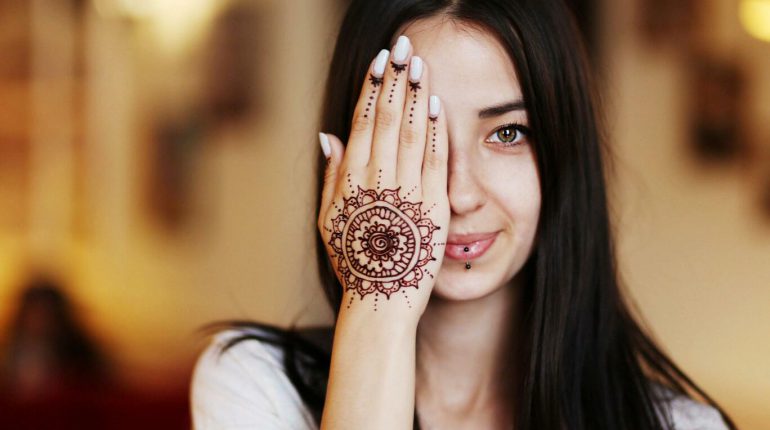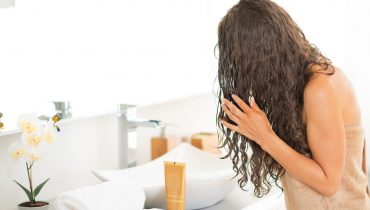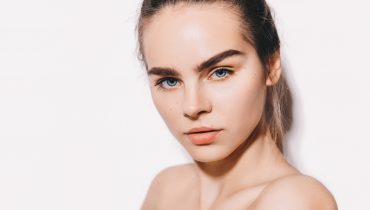Girls,
which one of you hasn’t used henna even once in her life?
A summer tattoo, eyebrow tinting or intensifying the color of hair – these are just three out of the wide range of henna applications. I’m sure that you must have tried at least one of them.
What is henna?
Most of us heard about henna but not everyone knows what henna really is. Let me shed some light on this issue 🙂
Henna IS NOT some tint, synthetic colorant or any other product that is supposed to colour our bodies. Natural henna IS a vegetable tint that is obtained from leaves and shoots of Lawsonia inermis. Dried out and powdered herb is combined with either water or oil – when exposed to oxygen, the main coloring substance is extracted, which it’s completely safe for the humans.
Henna. A little bit of history
It can’t be denied that henna’s history is pretty long. It’s one of the most popular products used by our grandmas, mothers and aunts. Before it reached our continent though, it was a part of the long-established Arab tradition.
When it comes to tracing the origins of henna, there are two camps. The majority believes that the custom of decorating body with henna comes from India, where people paint special patterns on their skin for wedding, for example. There are also people who say that henna is native to Egypt because this was the very country where the servants used henna to paint the bodies of pharaones. The truth though is that the tradition of henna using was developing simultaneously in two places at the same time – mystery solved 🙂
Henna: Modern vs. natural
Did you know that the treatment called ‘henna’ doesn’t only depend on using this natural tint? You must realize that one henna isn’t equal to other henna.
Many beauty parlors use the name ‘henna’ for dying eyebrows and eyelashes with the use of the modern tints that have the form of powder, cream or gel. They have little in common with Lawsonia inermis and the effects of intensified color of hair is obtained simply due to synthetic substances (chemicals).
And this is the main reason why modern henna appears to be a worse solution than the classical one. Also, it may cause allergic reaction or irritations.
Application of henna
Now comes the most important question. What can you use henna for? The methods of applying henna in cosmetics are really wide.
- Eyebrow henna tinting
- Dying eyelashes with henna
- Natural hair dyeing
- Henna body tattoo
Fun fact!
FDA (The Food and Drug Administration in America) recognizes henna as a natural tint for hair dyeing but… it doesn’t give permission to use henna for body decorating purposes.
Henna hair dye
The most common use of henna is to intensify the natural color of hair. Many people turn to henna since they perceive it as a natural and safe alternative to regular hair dyes with ammonia. Contrary to these commercial hair dyes, henna doesn’t cause damage to hair. Actually, it has an extra nourishing effect.
I can’t count the times I dyed my hair with henna. However, I’d call it reviving the color rather than dyeing per se 🙂
It’s worth realizing that it’s impossible to light hair up with henna. The effect of dyeing won’t be intensive either because the outcome that henna gives you is only a slight hair darkening – you shouldn’t expect to receive a similar result to the one achieved with a commercial hair dye. In short, henna will boost the shine of your hair and enhance its natural shade.
Eyebrow and eyelash henna tinting
The second popular treatment is eyebrow henna tinting and right after that it is eyelash henna tinting. If I were to describe you the the former option, I’d say that this treatment is something between daily and permanent makeup – you don’t have to apply it every day because its effects last for some time and you can use it to redefine the shape of brows and darken the color.
I have to admit that I’ve never used henna to tint my lashes. I prefer using a mascara because it doesn’t only make eyelashes darker but also makes them longer and thicker. But when it comes to eyebrows, well I treat them with henna regularly. I don’t want to spend money on permanent makeup, and henna is really easy to apply on your own at home.
Henna body tattoo
This is the least common application of henna that we turn to. Decorating body with henna is more popular in the Middle East where people apply this natural tint to their feet and hands during traditional rituals called ‘mehendi.’
I’ve never had an opportunity to decorate my body with henna. I know though that this is one of the most popular souvenirs that many people bring back home from their summer holiday.
Honestly, I do want to get my hands decorated with some beautiful pattern painted with henna. I like these temporary body tattoos. And you know what? This is a great thing to do for a hen’s night! I think that all the girls would be thrilled to get their bodies decorated in this exotic way!
What are you thoughts concerning my idea?
Have you ever used henna treatment?
Hit me up in the comments!


